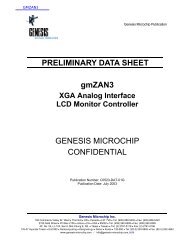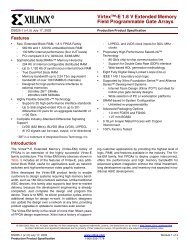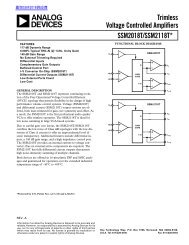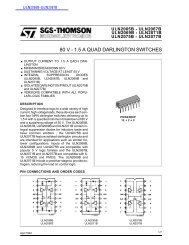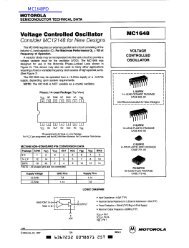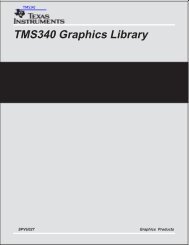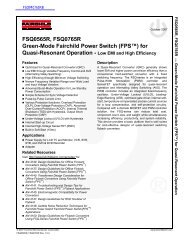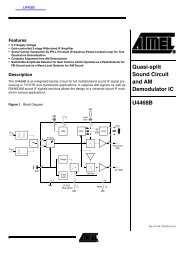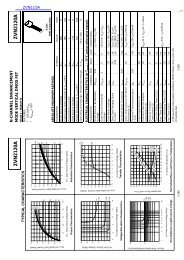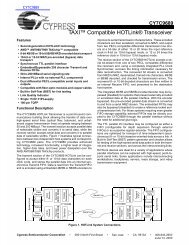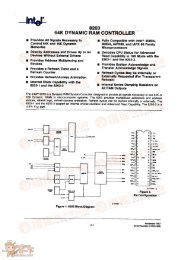Create successful ePaper yourself
Turn your PDF publications into a flip-book with our unique Google optimized e-Paper software.
Numonyx <strong>Wireless</strong> <strong>Flash</strong> <strong>Memory</strong> (<strong>W30</strong>)<br />
Appendix B Common <strong>Flash</strong> Interface<br />
This appendix defines the data structure or database returned by the Common <strong>Flash</strong><br />
Interface (CFI) Query command. System software parses this structure to gain critical<br />
information, such as block size, density, x8/x16, and electrical specifications.<br />
Once this information has been obtained, the software can determine which command<br />
sets to use to enable flash device writes, enable block erases, and otherwise control the<br />
flash device. The Query is part of an overall specification for multiple command set and<br />
control interface descriptions, which is called the Common <strong>Flash</strong> Interface, or CFI.<br />
B.1 Query Structure Output<br />
The Query database allows system software to obtain information for controlling the<br />
flash device. This section describes the flash device CFI-compliant interface that allows<br />
access to Query data.<br />
Query data are presented on the lowest-order data outputs (DQ0-7) only. The<br />
numerical offset value is the address relative to the maximum bus width that the flash<br />
device supports. On the <strong>W30</strong> family of flash memory devices, the Query table device<br />
starting address is a 10h, which is a word address for x16 flash devices.<br />
For a word-wide (x16) flash device, the first two Query-structure bytes, ASCII Q and R,<br />
appear on the low byte at word addresses 10h and 11h.<br />
• This CFI-compliant flash device outputs 00h data on upper bytes.<br />
• The flash device outputs ASCII Q in the low byte (DQ0-7 ) and 00h in the high byte<br />
(DQ8-15 ).<br />
At Query addresses containing two or more bytes of information, the least significant<br />
data byte is presented at the lower address, and the most significant data byte is<br />
presented at the higher address.<br />
In all of the following tables, addresses and data are represented in hexadecimal<br />
notation, so the h suffix has been dropped. In addition, because the upper byte of<br />
word-wide flash devices is always 00h, the leading 00 has been dropped from the table<br />
notation, and only the lower byte value is shown. Any x16 flash device outputs can be<br />
assumed to have 00h on the upper byte in this mode.<br />
Table 32: Summary of Query Structure Output as a Function of the <strong>Flash</strong> Device and Mode<br />
Device Addresses<br />
Device<br />
Hex<br />
Offset<br />
00010:<br />
00011:<br />
00012:<br />
November 2007 Datasheet<br />
Order Number: 290702-13 89<br />
Hex<br />
Code<br />
51<br />
52<br />
59<br />
ASCI<br />
I<br />
Value<br />
Q<br />
R<br />
Y



